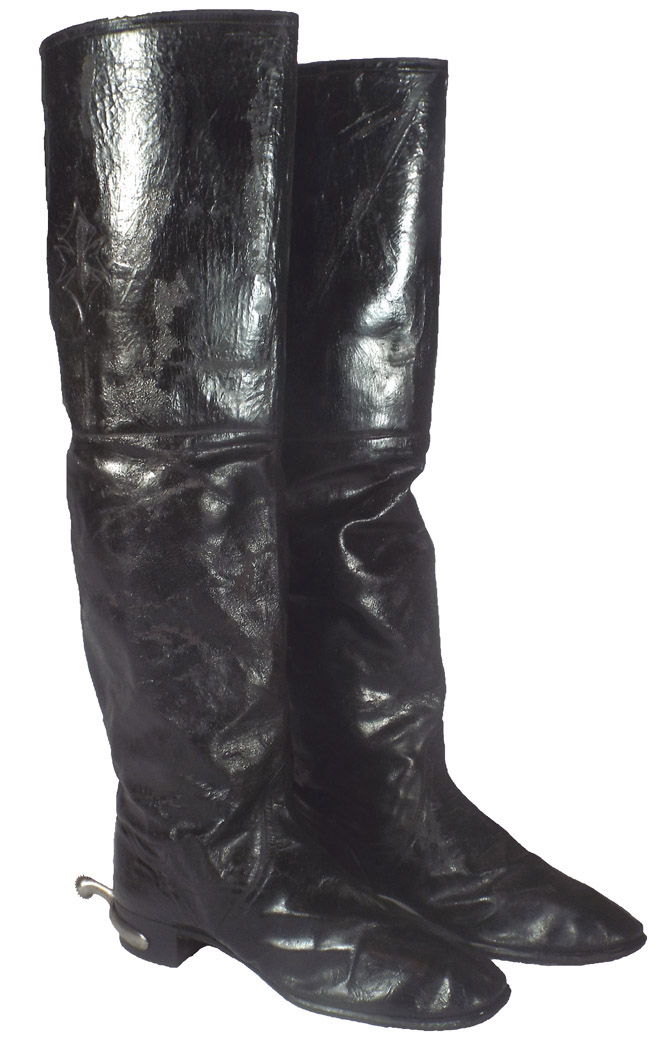
1862

WITH HIS TAILOR-MADE UNIFORM, THIS officer represents the ideal Confederate junior officer as he prepares to leave for war. His gray uniform coat follows the standard set by the War Department in the order of July 1861. The two strips of gold braid on his collar show that his rank is 1st lieutenant, as does the single gold cord that forms the European-style braid on his sleeve. His blue collar and cuffs indicate that he is serving in an infantry regiment. In addition, the gold trim on his cap is done in the style of an officer of his rank. Unlike that of Federal officers of the same rank, his coat is double breasted, a feature reserved for field-grade and general officers in the Union army. The sword he is proud to carry is the model 1850 company grade officers’ pattern. This, with the revolver visible on his left side, makes up his total armament.

Confederate infantry officer’s very blue-black kepi, band and crown very dark blue or black, with state of Virginia side buttons. Triple gold braid trim with an elegant quatrefoil on the crown. UNION DRUMMER BOY ANTIQUES, GETTYSBURG, PENNSYLVANIA

Confederate “CS” waist belt plate attached to its original painted linen waist belt. As leather resources became scarce in the South, substitute serviceable materials became more prevalent. Collectors term this oval buckle the “rope border” pattern, as an extra beaded design surrounds the brass die stamped “C. S.” WILLIAM ERQUITT COLLECTION

Brass button-polishing slide made by the British firm of Isaac, Campbell & Co. and imported through the blockade. DON TROIANI COLLECTION

Apair of Napoleon-style boots worn by Confederate Major General William Henry Talbot Walker, a hero of the Mexican War. At the battle of Atlanta on July 21, 1864, Walker was riding at the head of his division when he was hit by a bullet that pierced both thighs and caused him to bleed to death. AUGUSTA MUSEUM OF HISTORY, GEORGIA, WILLIAM ERQUITT PHOTO

Confederate-issued, Gardner pattern wood canteen, with original linen sling. The deeply carved, distinctive four-letter initials “J. G. B. J.” on the reverse side of this vessel are attributed to James Green Berry Jones, an elderly forty-one-year-old farmer who enlisted into the DeKalb Rangers, which formed Company D, 42nd Georgia Infantry. Jones was detailed to escort prisoners captured at Shiloh, Tennessee, to confinement at Madison Prison. Private Jones met Federal Lieutenant Ira H. Ford, who delicately carved this magnificent view of the prison compound with his scrolled signature above, “Lieut. I. H. Ford/18th Wisc. Vol./1862 Cotton Mill Prison at/Madison Georgia.” Lieutenant Ford became sick and disabled, suffering from his incarceration the remainder of his life. Ironically, Private Jones was later captured at Vicksburg and imprisoned, where he too became sick; he later died. WILLIAM ERQUITT COLLECTION

Wooden Gardner pattern canteen with cotton strap carried by J.M. Polk of the 4th Texas Regiment of Hood’s brigade. Polk was listed as a brave soldier and was wounded at Gaines Mill on June 27, 1862, and again at Chickamauga on September 20, 1863. PHOTOGRAPH COURTESY OF SKINNER AUCTIONEERS AND APPRAISERS, BOSTON, MASSACHUSETTS